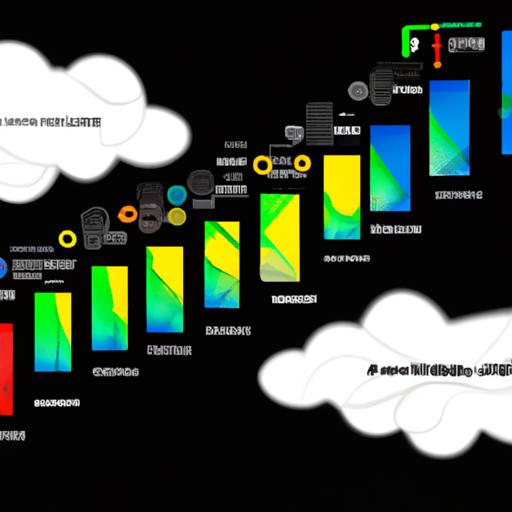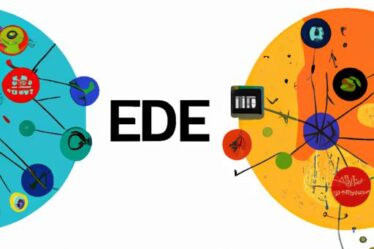
Introduction
Google Cloud Platform (GCP) stands as a powerhouse in the realm of cloud computing, offering a myriad of services tailored to meet the diverse needs of businesses worldwide. From scalable infrastructure to advanced data analytics, GCP has become the go-to solution for organizations seeking to leverage the cloud for enhanced efficiency and innovation.
Understanding the intricacies of GCP pricing is paramount for businesses looking to optimize their cloud expenditure and maximize their ROWith a multitude of pricing options and components to consider, delving into the realm of GCP pricing can seem daunting at first. However, armed with the right knowledge and strategies, businesses can navigate the pricing landscape with ease, ensuring cost-effectiveness and resource optimization along the way. Let’s embark on a journey to unravel the nuances of google cloud platform pricing and equip ourselves with the tools to make informed decisions in the cloud computing arena.
Google Cloud Platform Pricing Model
Overview of GCP Pricing Model
When delving into the realm of Google Cloud Platform (GCP) pricing, it’s essential to grasp the underlying model that governs how costs are calculated. GCP operates on a pay-as-you-go pricing structure, allowing businesses to only pay for the resources they consume. This flexible model empowers organizations to scale their usage up or down based on their needs, ensuring cost-effectiveness and efficiency in resource allocation.
Different Pricing Options Available
GCP offers a variety of pricing options to cater to the diverse requirements of businesses. From on-demand pricing for short-term projects to sustained usage discounts for long-term commitments, GCP provides flexibility and cost savings opportunities for organizations of all sizes. Understanding the nuances of each pricing option is crucial in optimizing costs and maximizing the value derived from GCP services.
Factors Influencing GCP Pricing
Several factors influence GCP pricing, including resource usage, data transfer, storage requirements, and region-specific pricing variations. By evaluating these factors and implementing cost optimization strategies, businesses can effectively manage their GCP expenditure and ensure that they are getting the best value for their investment. Let’s delve deeper into the components that shape GCP pricing and explore how businesses can navigate the pricing landscape to their advantage.
Understanding GCP Pricing Components
Breakdown of GCP Pricing Components
When delving into the realm of Google Cloud Platform pricing, it is essential to understand the various components that contribute to the overall cost. By breaking down these pricing components, businesses can gain clarity on where their expenses are allocated and identify potential areas for optimization.
Compute Engine Pricing
The Compute Engine is a fundamental component of GCP, providing virtual machine instances to run workloads in the cloud. Understanding the pricing structure of Compute Engine involves considerations such as machine type, region, and usage duration. By optimizing instance types and utilization, businesses can effectively manage their Compute Engine costs and enhance cost efficiency.
Storage Pricing
Storage is a critical aspect of cloud computing, enabling businesses to store and access data seamlessly. GCP offers various storage options, each with its pricing model based on factors such as storage class, data redundancy, and access frequency. By aligning storage choices with specific use cases and data requirements, businesses can optimize their storage costs while ensuring data accessibility and durability.
Networking Pricing
Networking plays a vital role in ensuring seamless connectivity and data transfer within the cloud environment. GCP provides networking services that facilitate secure communication and efficient data flow between resources. Understanding networking pricing involves considerations such as bandwidth usage, egress traffic, and network configurations. By optimizing networking setups and traffic patterns, businesses can manage their networking costs effectively while maintaining robust connectivity.
Data Transfer Pricing
Data transfer within the cloud environment incurs costs based on the volume of data exchanged between resources and external networks. GCP offers pricing models for data transfer that vary depending on factors such as region, network type, and data transfer volume. By monitoring data transfer patterns and optimizing data routing, businesses can minimize data transfer costs and enhance overall cost-effectiveness in their cloud operations.
Tips for Optimizing Google Cloud Platform Costs
Strategies for Optimizing GCP Costs
Navigating the realm of Google Cloud Platform pricing can be complex, but there are strategies you can employ to optimize costs and ensure efficient resource allocation. One key strategy is to regularly monitor and analyze your resource usage to identify inefficiencies and areas for improvement. By gaining insights into your usage patterns, you can make informed decisions on how to optimize your resources and minimize unnecessary expenses.
Utilizing Cost Calculators
Google Cloud Platform offers cost calculators that allow you to estimate your monthly expenses based on your usage patterns and resource configurations. By using these tools, you can gain a better understanding of how different configurations and services impact your overall costs. This insight empowers you to make informed decisions when provisioning resources and selecting services, thereby optimizing your costs and maximizing your RO
Rightsizing Resources
Rightsizing your resources is another effective way to optimize Google Cloud Platform costs. By matching your resource allocations to your actual usage needs, you can avoid over-provisioning and reduce unnecessary expenses. Regularly reviewing and adjusting your resource allocations based on your usage patterns can help you optimize costs while ensuring that you have the necessary resources to support your operations.
Leveraging Discounts and Commitments
Google Cloud Platform offers various discounts and commitment options that can help you save on your cloud expenses. By committing to a certain level of usage or pre-paying for resources, you can access discounted rates and lower your overall costs. Additionally, exploring reserved instances and sustained use discounts can further optimize your costs and drive cost savings over time. By leveraging these cost-saving opportunities, you can effectively optimize your Google Cloud Platform costs and maximize the value of your cloud investment.
Comparing Google Cloud Platform Pricing with Competitors
Comparison of GCP Pricing with Other Cloud Service Providers
When it comes to cloud computing, the pricing landscape can vary significantly across different providers. Comparing Google Cloud Platform (GCP) pricing with its competitors is crucial for businesses looking to make informed decisions about their cloud infrastructure. While GCP offers a transparent and flexible pricing model, it’s essential to assess how it stacks up against other industry players in terms of cost-effectiveness and value.
Advantages of GCP Pricing
One of the key advantages of GCP pricing is its pay-as-you-go model, which allows businesses to scale resources up or down based on their needs, ultimately leading to cost savings and operational efficiency. Additionally, GCP’s sustained use discounts and committed use discounts enable businesses to optimize their cloud expenditure and unlock additional savings over time. By leveraging these pricing advantages, businesses can harness the full potential of Google Cloud Platform while staying within budget constraints.
Potential Cost Savings with GCP
By choosing Google Cloud Platform, businesses can tap into a wealth of cost-saving opportunities that can drive long-term value and growth. From innovative pricing options to efficient resource management tools, GCP empowers businesses to optimize their cloud spending and allocate resources strategically. With GCP’s competitive pricing and robust features, businesses can achieve significant cost savings while unlocking new possibilities for innovation and growth in the digital age.
Conclusion
In conclusion, mastering the art of Google Cloud Platform pricing is a crucial step for businesses seeking to harness the full potential of cloud computing. By understanding the pricing model, components, and optimization strategies, organizations can effectively manage their costs and drive sustainable growth in the digital landscape. With GCP’s competitive pricing, innovative services, and unparalleled scalability, businesses have the opportunity to propel their operations to new heights while maintaining cost efficiency.
As you navigate the realm of Google Cloud Platform pricing, remember to leverage tools, resources, and expert guidance to make informed decisions that align with your business objectives. Embrace the power of the cloud and unlock a world of possibilities with GCP as your trusted partner in the digital transformation journey. Stay informed, stay agile, and let GCP pricing be a strategic asset that propels your business towards success in the ever-evolving tech landscape.


